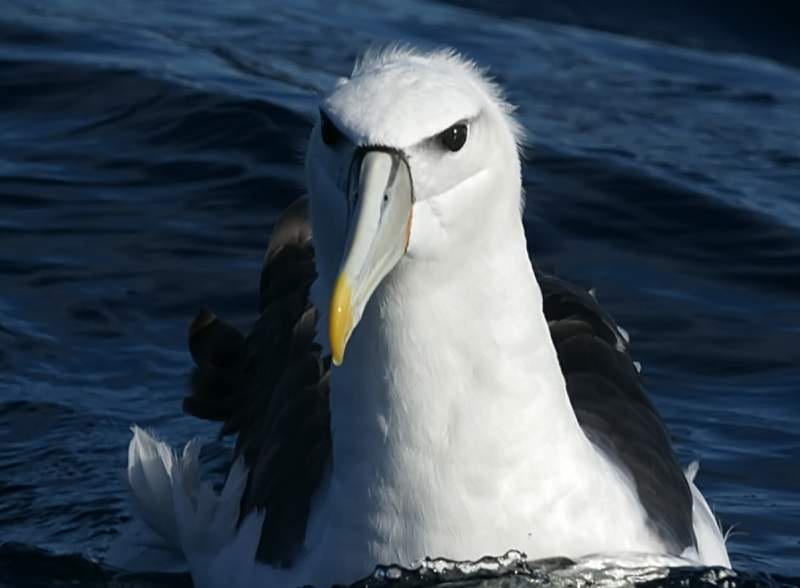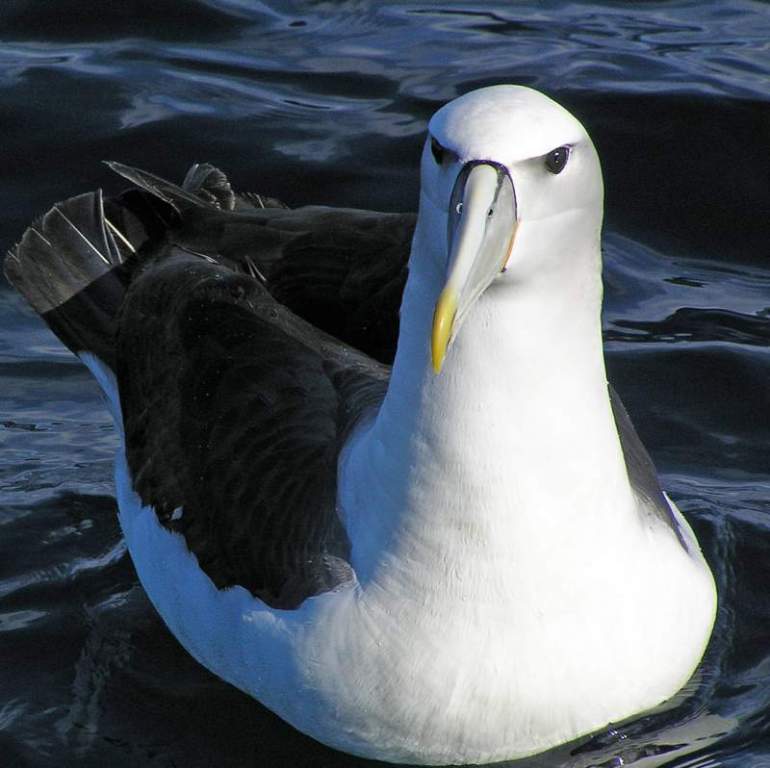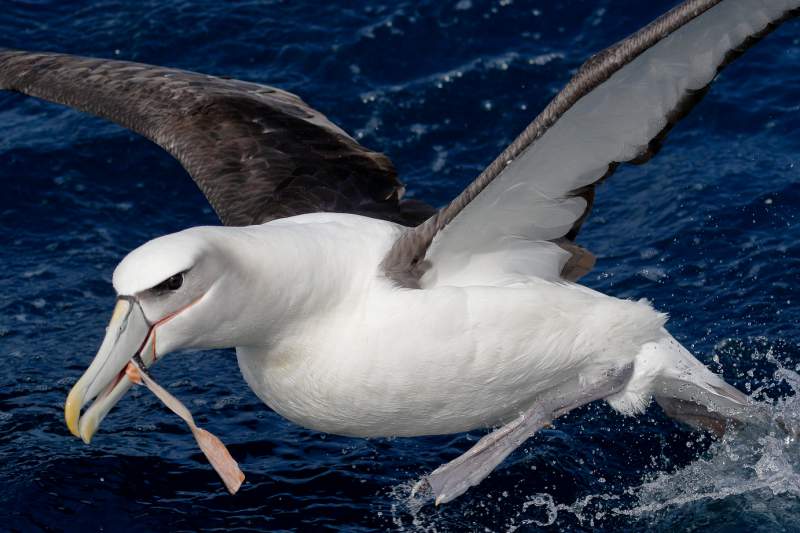Family: The Shy Albatross (Thalassarche cauta, previously Diomedea cauta) belongs to the family Diomedeidae in the genus Thalassarche.
Habitat: Winter and spring are the best times to see seabirds from cliffs or boats, and the shy albatross is no exception. It rarely follows larger ships, but often approaches fishing vessels and glides and banks low over the water as it approaches the coast. It is the largest of the mollymawks, approaching the Wandering Albatross in size. Most often, it is found in southeastern Australian waters, traveling westward across the Bight.
Australian waters are the breeding grounds for the shy albatross. During September and October, it gathers in loose colonies on the tops of inaccessible islands to nest on rocks and rubble. A pair of mated birds court with their bills, cackles, and tails.

Breeding: They defend their nest by standing upright, stretching their necks forward, gaping, shaking their heads from side to side, baaing, and clapping. Parents are responsible for providing food for their chicks. In order to help the chick recognize each of them, they often bow as they approach. As the chick cheeps, it pecks at the parent’s bill, first at the tip and then along its length. Soon, the parent pumps food from its stomach, and the chick scoops it up by inserting its bill crosswise into the parent’s mouth.
Identification: Both sexes are similar. The male is larger. The body is white. The back and upper wings are ash-grey; the underwings are white with narrow black edges and tips. Grey blooms on the face and neck, separated by dark eyebrows from white or greyish caps. The eyes are dark brown. The bill is leaden with a pale-yellow tip and a black-edged nasal groove. Feet, toes, and webs are blue-grey. The immature bird is similar to adults but the bill and feet are darker; sometimes darker on the nape and ear coverts. The downy young are grey-downed; the bill is black, and the feet are flesh.

Vocalizations: Hoarse gurgling and guttural calls when feeding and fighting; bill clappering and soft throat calls when courting.
Diet: Fish, squid cuttlefish, crustaceans, and carrion are its main sources of nutrition.
Nesting: It is common for nesting to take place in late September or early October. Nests in a muddy bowl, reinforced with plant matter or feathers, are maintained by a chick.
Egg: Shy Albatross usually lays one egg; white often flecked with red towards the larger end; oblong-oval, about 105 x 67 mm. The incubation period is about 60-70 days, for both sexes. Young fledge in 18-19 weeks. Young are fully grown and fledge in about mid-April.
Alternative Names: The bird is also known as the White-capped Albatross and Mollymawk.
Size: The shy albatross is about 990 mm long, with a wingspan of 2250 mm.
Distribution: The shy albatross is found widely in the Southern Hemisphere oceans. In Australia, it breeds on Albatross Island in Bass Strait, and on Mewstone and Pedra Branca, in southern Tasmania.
Race: Australia has two races. The one resident, and the other a greyer-headed, darker-billed visitor from New Zealand.
Related Reading: Black-browed Albatross (Thalassarche melanophris)







